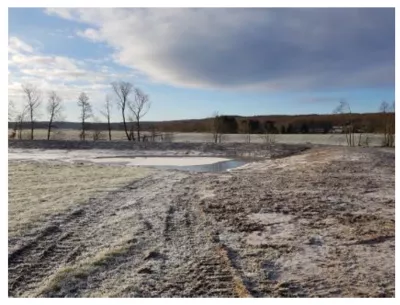General information
RDP Priority
- P4. Ecosystems management
RDP Focus Area
- 4B: Water management
Summary
Eutrophification refers to the phenomenon in which a body of water becomes overly enriched with minerals and nutrients due to runoff from the land. This induces excessive growth of plants and algae and may result in oxygen depletion of the water body. Some areas are more sensitive or more exposed to the overload of nitrogen and phosphorus, and the area of Anders Ericson’s land in Blekinge in southern Sweden is one of them.
Creating wetlands in the agricultural landscape might be a way of decreasing the runoff of nutrients into water bodies. After receiving advice during the Greppa Näringen-project, landowner Anders Ericson decided on this course of action. The wetland will help protect the water of Västra Orlundsån stream from eutrophication by binding the phosphorus and transforming the captured nitrogen into gas.
Results
Many different types of plants and animals thrive in the wetland and the surrounding areas. Since this kind of biotope is rare in the surrounding landscape, the wetland is expected to help increase biodiversity.
Given that it is possible to control the water flow in and out of the wetland, if needed, the wetland can be used to store water for irrigation.

Promoter
Anders Ericson
Funding
Total RDP budget 64 018 (EUR)
EAFRD 25 991 (EUR)
National/regional 38 027 (EUR)
Keywords
Resources
Documents
gp_se_wetland_web_je_v2.pdf
(PDF – 299.81 KB)
contact

